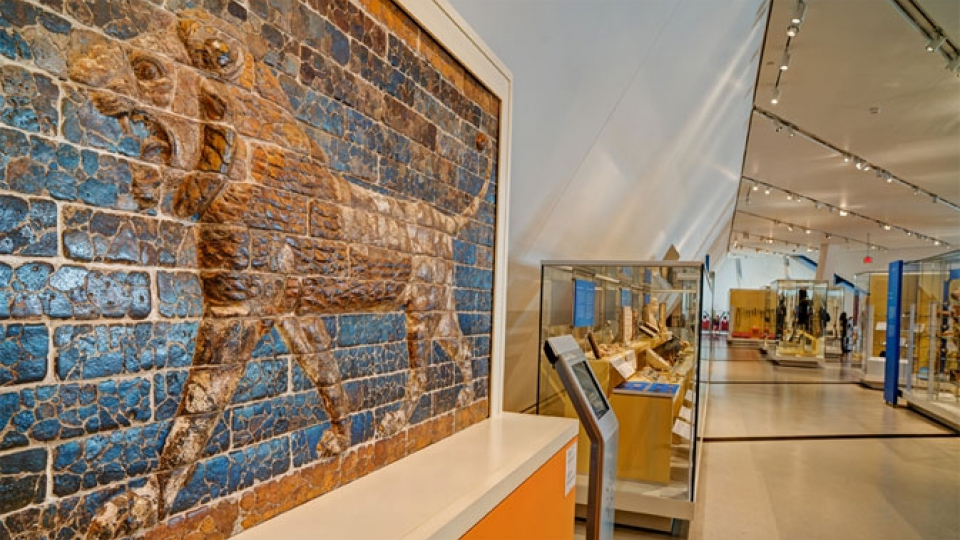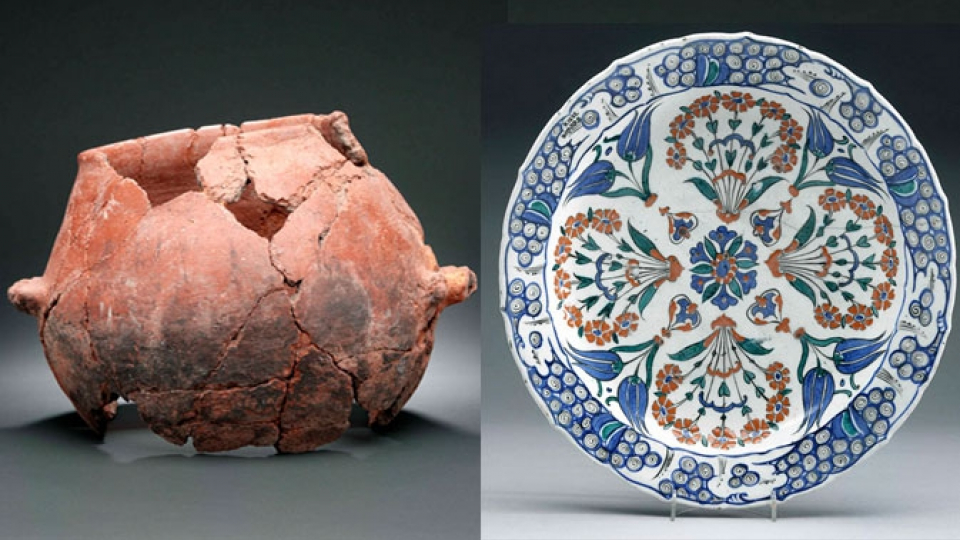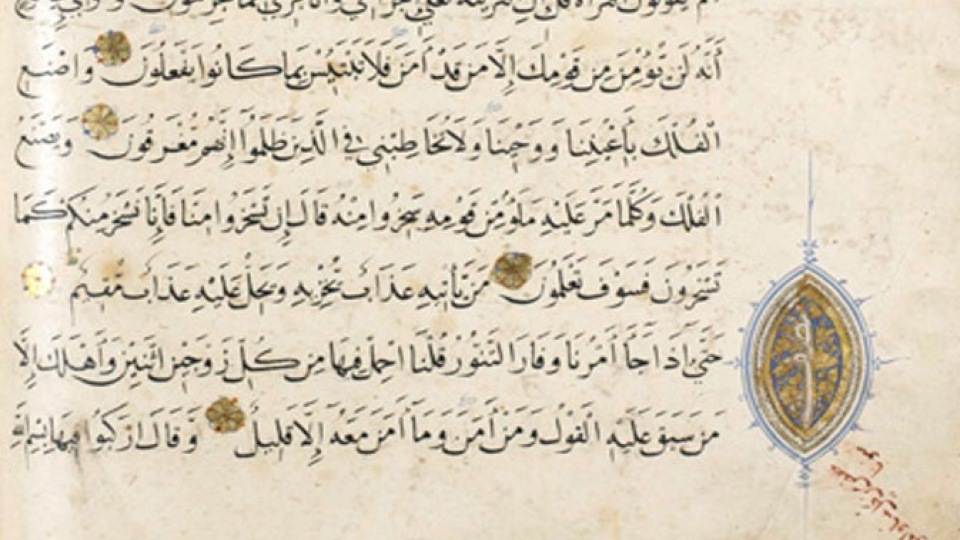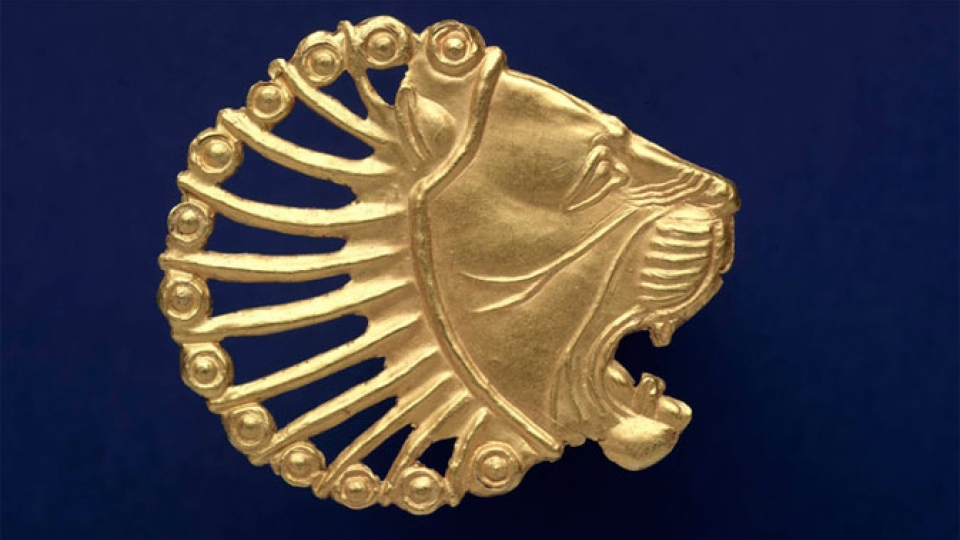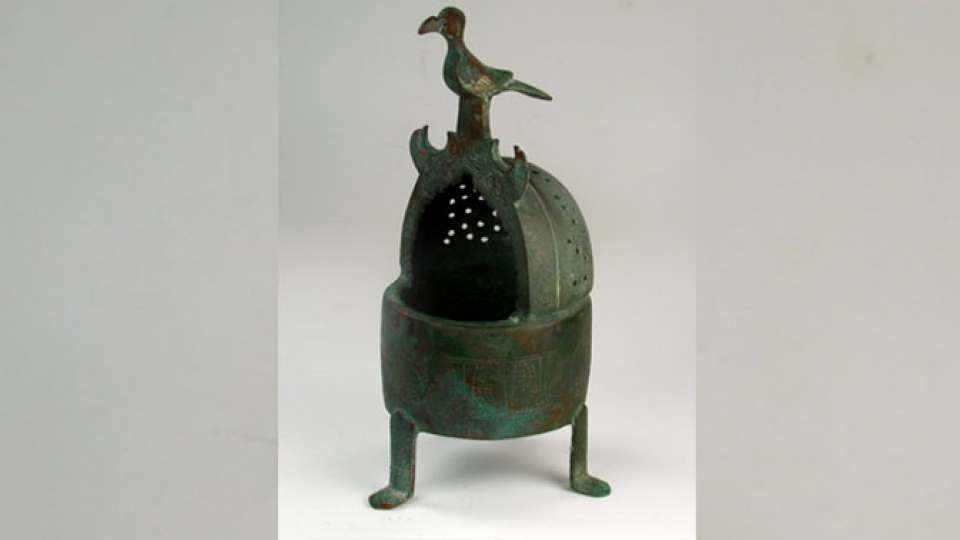The Wirth Gallery of the Middle East is temporarily closed while we refresh our galleries. Stay tuned for more information soon!
The Cradle of Civilization.
In an area of the Middle East known as the Fertile Crescent, where the Tigris and Euphrates rivers meet, ancient societies flourished and made enormous advances in culture and technology. These advances, in areas such as writing, mathematics, law, medicine and religion, were so significant they have become the foundations for many of the customs we practise today.
Trace the development of script and writing over almost 4,000 years, from its beginnings as ancient cuneiform tablets to exquisite Arabic script. Follow the evolution of craftsmanship beyond utility to exceptional beauty with artifacts made of wood, metal, stone and glass. Examine how expressions of faith developed through ancient practices, represented by Palaeolithic clay figures, ancient Sumerian worshipper statuettes, Jewish ossuaries, and Christian and Islamic religious objects.
Examine the legacies left by the ancient Babylonians, Sumerians, Assyrians and others from the region in a gallery that explores a heritage spanning the Palaeolithic Age to the 20th century AD.
About the Gallery
What?
More than 1,000 artifacts from the Middle East are presented in thematic displays of Documents & Writing, Technology, Spirituality & Religion, Art in Life, and Arms & Armour.
Where?
The gallery focuses on a geographic part of the Middle East, referred to as the Fertile Crescent, that stretches from the Eastern Mediterranean and Iraq to Iran and the Arabian Peninsula.
When?
From the Palaeolithic Age to AD 1900.

